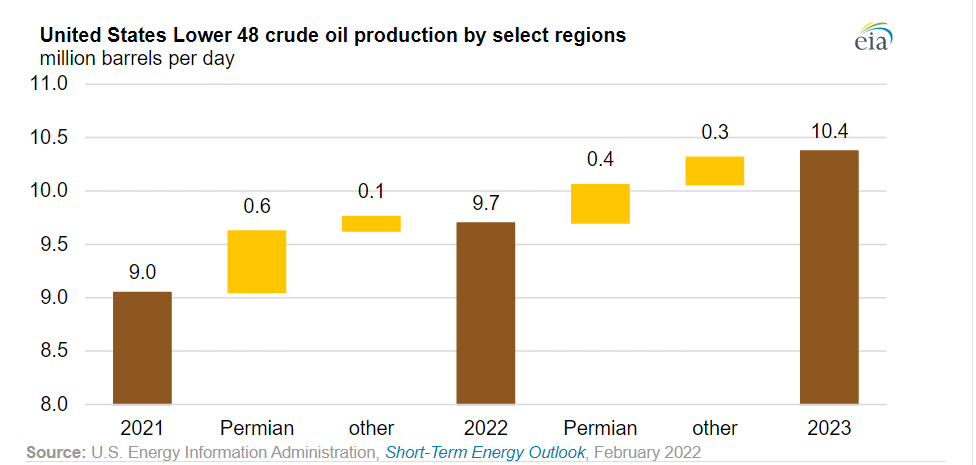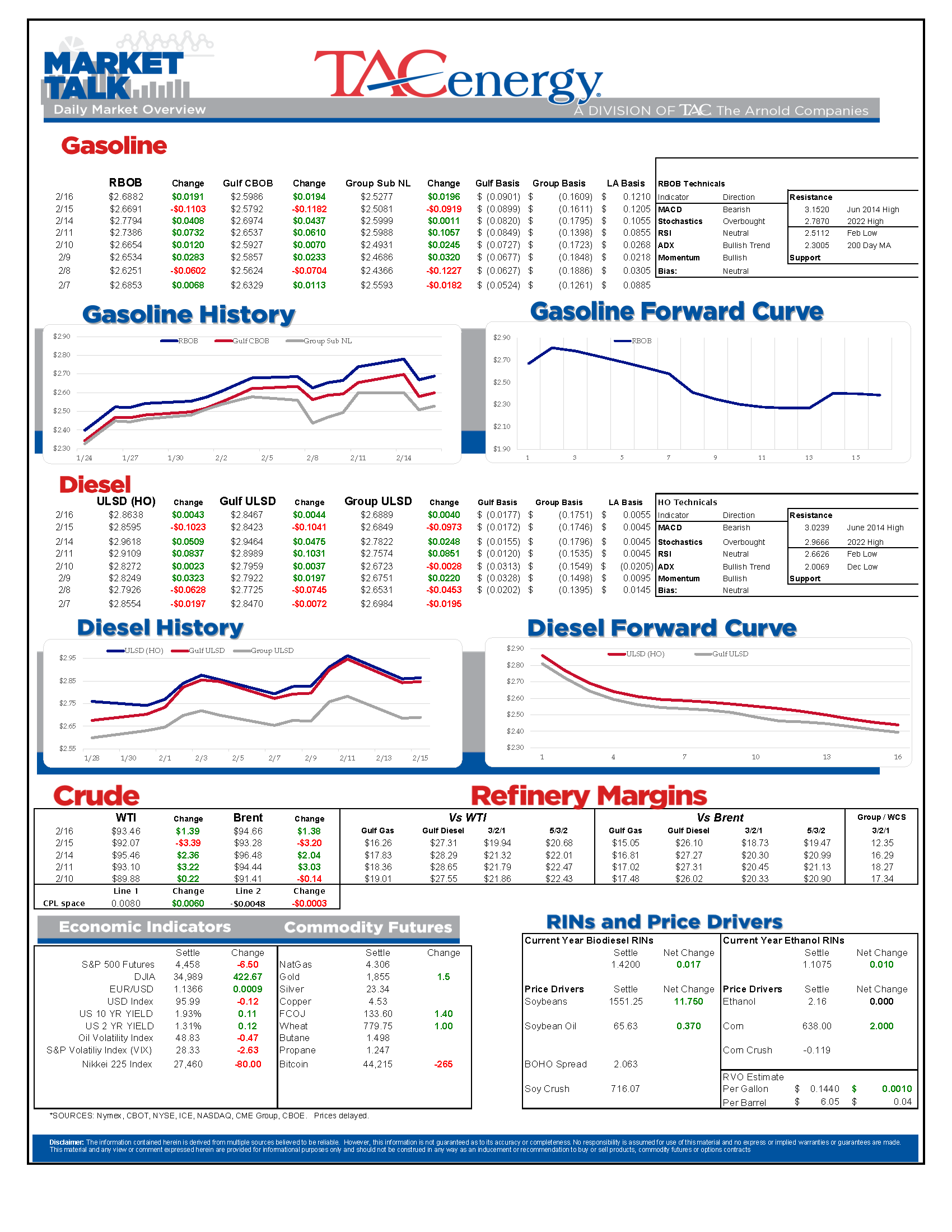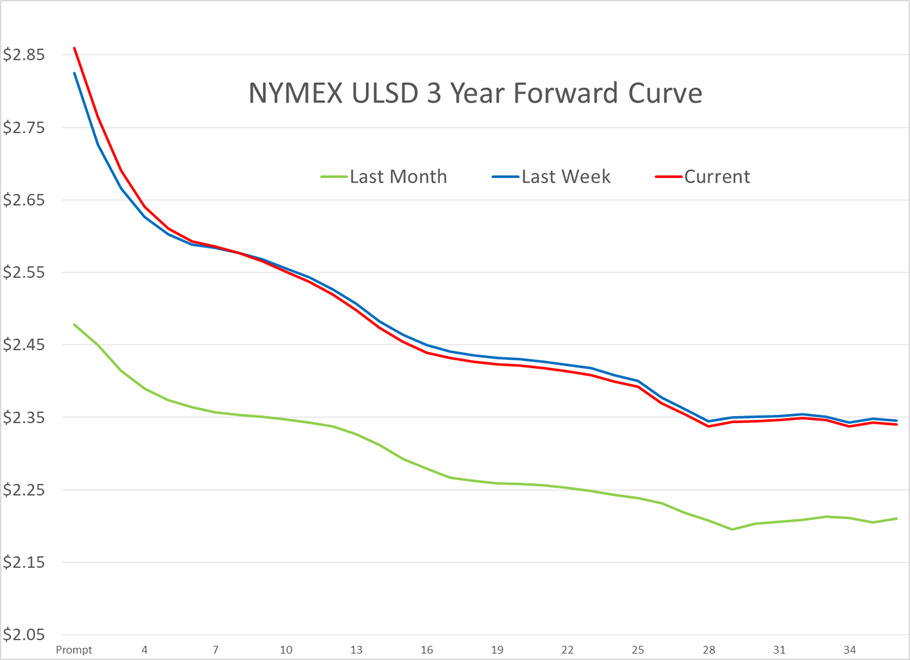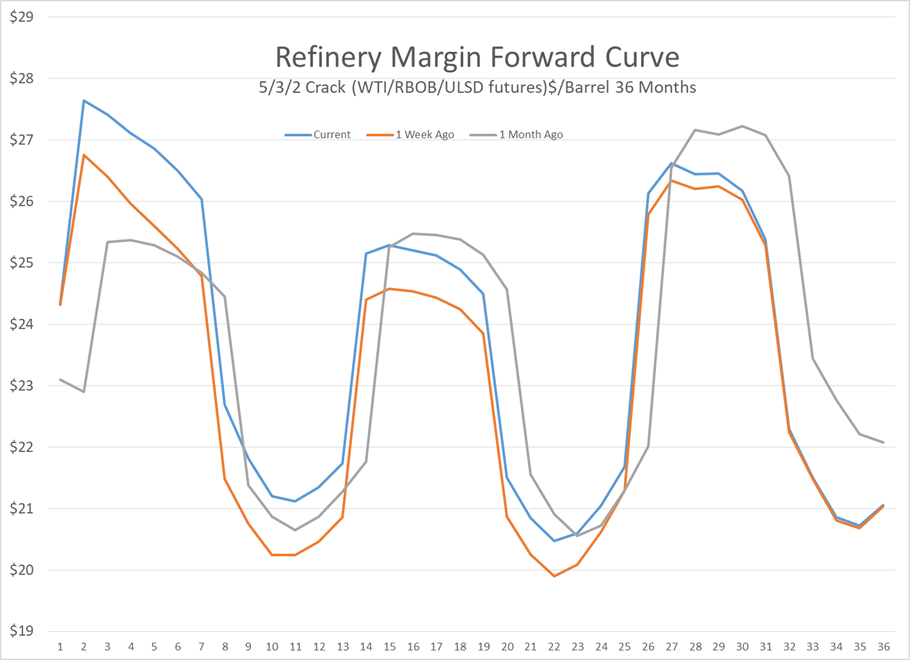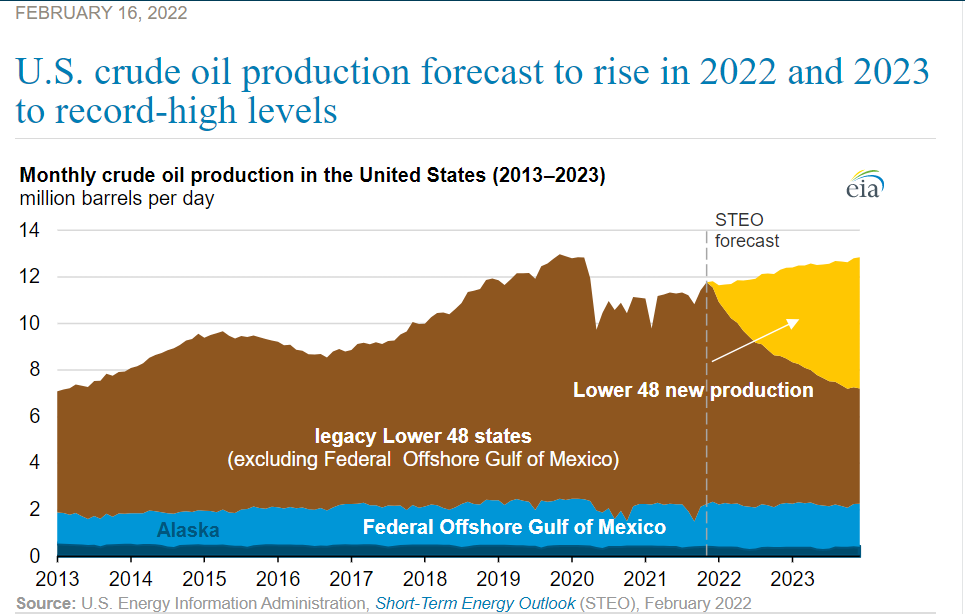Energy Futures Are Bouncing Back This Morning After Their Biggest Daily Drop Since Black Friday

Energy futures are bouncing back this morning after their biggest daily drop since Black Friday as a debate over troop counts, inventory declines and a presidential warning all seem to be encouraging buyers this morning. Equity markets continue to struggle with another troubling inflation report and a flattening yield curve both signaling to many that there may be more economic pain ahead.
As the forward curve charts show, despite the big selloff Tuesday, not much has changed from a week ago. From a chart perspective, the weekly bullish trends are still holding, but there’s no longer much room to spare to the downside if the bulls are going to regain control this week.
While NATO and Russia continue to disagree on just about everything, including whether there are more or less troops surrounding Ukraine, the US President warned that the sanctions planned if Russia does invade will target energy exports, which will likely push prices higher. Given that petroleum prices have already risen 40% or more in the past 2 months (see the PPI inflation note above) the question then becomes whether or not that’s already priced in, and anything less will become a reason to sell in the near future.
The API reported small inventory draws across the board last week. If the DOE confirms that estimate, it will provide more validation for the backwardation we’re seeing in the forward curves as most US markets outside of the Midwest are tighter on days of supply than they typically are this time of year, setting the stage for more product allocations and outages as demand ramps up this spring.
Speaking of outages: Another winter storm is sweeping the country, and is expected to bring severe thunderstorms with it. Unlike the last 3 storms however, it’s not expected to bring the cold snap, snow and ice to parts of the south that disrupted both refinery operations and travel. While overnight temperatures will dip below freezing for most of Southeast, day time tempts will still be pushing mid 50s which should help limit the surge in electricity demand that might hamper a diesel supply network that’s been caught flat footed this winter. That sigh of relief seems to help explain why the March HO contract went negative in the past few minutes after being up 4 cents overnight, while the rest of the complex is holding onto gains.
The relatively tight gasoline markets should make the spring RVP transition a bit easier for inventory holders, and may limit the amount of price dumping that often happens as the deadlines loom. The refiners that survived the COVID crisis look to be in a great position now as crack spreads have rebounded nicely and the forward curve shows them staying in positive territory for the next few years.
The EIA continues to predict that US oil production will hit record highs this year and next, even though the weekly stats have yet to show much increase in output so far this year. The Permian basin is expected to account for 6 out of every 7 new barrels of oil produced in the country this year according to the report, while other basins will take on more of the burden next year.
Click here to download a PDF of today's TACenergy Market Talk.
Latest Posts
Gasoline Futures Are Leading The Way Lower This Morning
The Sell-Off Continues In Energy Markets, RBOB Gasoline Futures Are Now Down Nearly 13 Cents In The Past Two Days
Week 15 - US DOE Inventory Recap
Prices To Lease Space On Colonial’s Main Gasoline Line Continue To Rally This Week
Social Media
News & Views
View All
Gasoline Futures Are Leading The Way Lower This Morning
It was a volatile night for markets around the world as Israel reportedly launched a direct strike against Iran. Many global markets, from equities to currencies to commodities saw big swings as traders initially braced for the worst, then reversed course rapidly once Iran indicated that it was not planning to retaliate. Refined products spiked following the initial reports, with ULSD futures up 11 cents and RBOB up 7 at their highest, only to reverse to losses this morning. Equities saw similar moves in reverse overnight as a flight to safety trade soon gave way to a sigh of relief recovery.
Gasoline futures are leading the way lower this morning, adding to the argument that we may have seen the spring peak in prices a week ago, unless some actual disruption pops up in the coming weeks. The longer term up-trend is still intact and sets a near-term target to the downside roughly 9 cents below current values. ULSD meanwhile is just a nickel away from setting new lows for the year, which would open up a technical trap door for prices to slide another 30 cents as we move towards summer.
A Reuters report this morning suggests that the EPA is ready to announce another temporary waiver of smog-prevention rules that will allow E15 sales this summer as political winds continue to prove stronger than any legitimate environmental agenda. RIN prices had stabilized around 45 cents/RIN for D4 and D6 credits this week and are already trading a penny lower following this report.
Delek’s Big Spring refinery reported maintenance on an FCC unit that would require 3 days of work. That facility, along with several others across TX, have had numerous issues ever since the deep freeze events in 2021 and 2024 did widespread damage. Meanwhile, overnight storms across the Midwest caused at least one terminal to be knocked offline in the St. Louis area, but so far no refinery upsets have been reported.
Meanwhile, in Russia: Refiners are apparently installing anti-drone nets to protect their facilities since apparently their sling shots stopped working.
Click here to download a PDF of today's TACenergy Market Talk.

The Sell-Off Continues In Energy Markets, RBOB Gasoline Futures Are Now Down Nearly 13 Cents In The Past Two Days
The sell-off continues in energy markets. RBOB gasoline futures are now down nearly 13 cents in the past two days, and have fallen 16 cents from a week ago, leading to questions about whether or not we’ve seen the seasonal peak in gasoline prices. ULSD futures are also coming under heavy selling pressure, dropping 15 cents so far this week and are trading at their lowest level since January 3rd.
The drop on the weekly chart certainly takes away the upside momentum for gasoline that still favored a run at the $3 mark just a few days ago, but the longer term up-trend that helped propel a 90-cent increase since mid-December is still intact as long as prices stay above the $2.60 mark for the next week. If diesel prices break below $2.50 there’s a strong possibility that we see another 30 cent price drop in the next couple of weeks.
An unwind of long positions after Iran’s attack on Israel was swatted out of the sky without further escalation (so far anyway) and reports that Russia is resuming refinery runs, both seeming to be contributing factors to the sharp pullback in prices.
Along with the uncertainty about where the next attacks may or may not occur, and if they will have any meaningful impact on supply, come no shortage of rumors about potential SPR releases or how OPEC might respond to the crisis. The only thing that’s certain at this point, is that there’s much more spare capacity for both oil production and refining now than there was 2 years ago, which seems to be helping keep a lid on prices despite so much tension.
In addition, for those that remember the chaos in oil markets 50 years ago sparked by similar events in and around Israel, read this note from the NY Times on why things are different this time around.
The DOE’s weekly status report was largely ignored in the midst of the big sell-off Wednesday, with few noteworthy items in the report.
Diesel demand did see a strong recovery from last week’s throwaway figure that proves the vulnerability of the weekly estimates, particularly the week after a holiday, but that did nothing to slow the sell-off in ULSD futures.
Perhaps the biggest next of the week was that the agency made its seasonal changes to nameplate refining capacity as facilities emerged from their spring maintenance.
PADD 2 saw an increase of 36mb/day, and PADD 3 increased by 72mb/day, both of which set new records for regional capacity. PADD 5 meanwhile continued its slow-motion decline, losing another 30mb/day of capacity as California’s war of attrition against the industry continues. It’s worth noting that given the glacial pace of EIA reporting on the topic, we’re unlikely to see the impact of Rodeo’s conversion in the official numbers until next year.
Speaking of which, if you believe the PADD 5 diesel chart below that suggests the region is running out of the fuel, when in fact there’s an excess in most local markets, you haven’t been paying attention. Gasoline inventories on the West Coast however do appear consistent with reality as less refining output and a lack of resupply options both continue to create headaches for suppliers.

